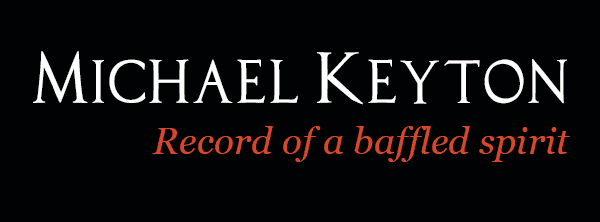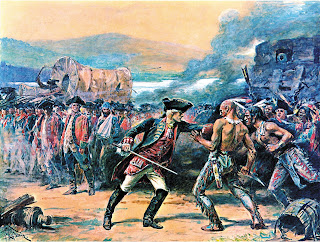James Wolfe
I was taught by history teachers who knew a good story would hook small boys and girls. It worked with me and those I subsequently taught. Though no longer fashionable, History abounds in stories of great men; occasionally women, but that then was the nature of things.
My heart sank whenever I had to teach economic history. It was hard to get excited about the Spinning Jenny or Arkwright's Water Frame, and the exploitation of women and children, the grime and the smoke was just plain depressing.
No. Give me adventure. And on a grand scale. The struggle for world domination between Britain and France. There was Clive of India of course, but we weren't in India. We were up the St Lawrence facing Quebec, and I was trying to imagine the red and blue uniforms of C18th soldiers; vivid pinpricks lost in the immensity of the Canadian landscape, forests and hills.
James Wolfe was just 32 years old when, in 1759, he was put in charge of 5000 men and charged with taking Quebec from the French. Wolfe was an experienced soldier, having fought at Dettingen, (1743) Culloden, (1746) and Louisburg (1758). His opponent, Louis Joseph de Montcalm, led a significantly larger though less well-trained force. In June 1759 a British force sailed down the St Lawrence and set up camp on the Île d'Orleans directly facing the apparently impregnable Quebec.
Wolfe’s first attack in July was repulsed with heavy losses. Wolfe next attempted to force Montcalm’s hand by attacking neighbouring French settlements and farms. The attacks seriously reduced French supplies but failed in their objective in luring out Montcalm, and time was running out for the British. Disease was rife, winter was approaching, and Wolfe himself fell seriously ill.
In a letter to his mother, Wolfe wrote: “The Marquis of Montcalm is at the head of a great number of bad soldiers, and I am at the head of a small number of good ones that wish for nothing so much as to fight him; but the wary old fellow avoids any action, doubtful of the behaviour of his army.”
At last, a hidden path was discovered up a170-foot cliff two miles upstream from Quebec.
Colonel William Howe crept up it at night, leading a small detachment of men and captured the small French garrison that guarded it. The way was now open for the main British force of 5000, men which deployed themselves on the Plains of Abraham. Wolfe organised them in a shallow horse-shoe formation about half a mile long and two ranks deep. The French rushed out to attack and made the mistake of firing when barely in range. The British waited until the last moment and fired. They advanced a few paces farther and fired again. The effect was devastating and the French fled in disarray.
Both Montcalm and Wolfe lost their lives in the battle but Quebec was taken—but for how long? Winter had set in forcing the British navy to retreat before the St Lawrence iced over. The now poorly supplied British garrison barely survived that winter but survive they did.
The new British governor of Quebec, James Murray, pursued an enlightened policy, ensuring the good behaviour of his troops—to women in particular, and cooperating with the Jesuits in maintaining good relations with the French speaking populace.
The Ursuline sisters were equally cooperative. Their monastery housed the new British regime and, in exchange, was supplied with food and supplies, which prevented starvation. The present day Quebec is very much a reflection of what took place a bare three hundred years ago



































































